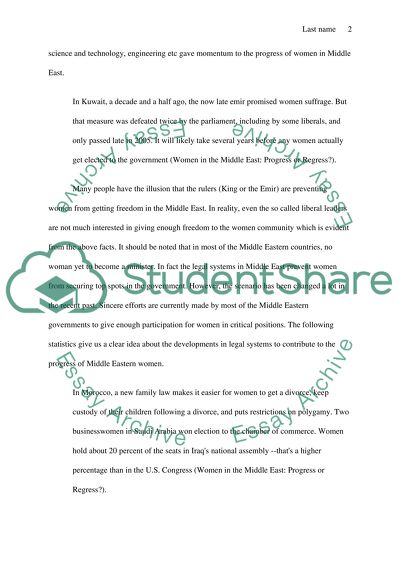Cite this document
(“Progress of Women in Middle East Essay Example | Topics and Well Written Essays - 2000 words”, n.d.)
Retrieved from https://studentshare.org/history/1451210-trace-the-progress-of-women-in-a-selected-country
Retrieved from https://studentshare.org/history/1451210-trace-the-progress-of-women-in-a-selected-country
(Progress of Women in Middle East Essay Example | Topics and Well Written Essays - 2000 Words)
https://studentshare.org/history/1451210-trace-the-progress-of-women-in-a-selected-country.
https://studentshare.org/history/1451210-trace-the-progress-of-women-in-a-selected-country.
“Progress of Women in Middle East Essay Example | Topics and Well Written Essays - 2000 Words”, n.d. https://studentshare.org/history/1451210-trace-the-progress-of-women-in-a-selected-country.


